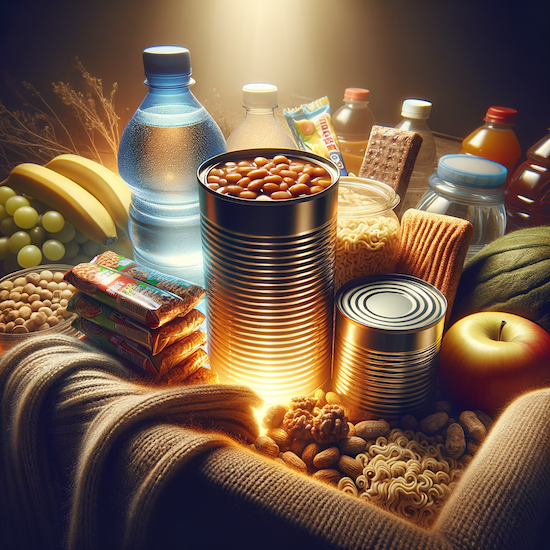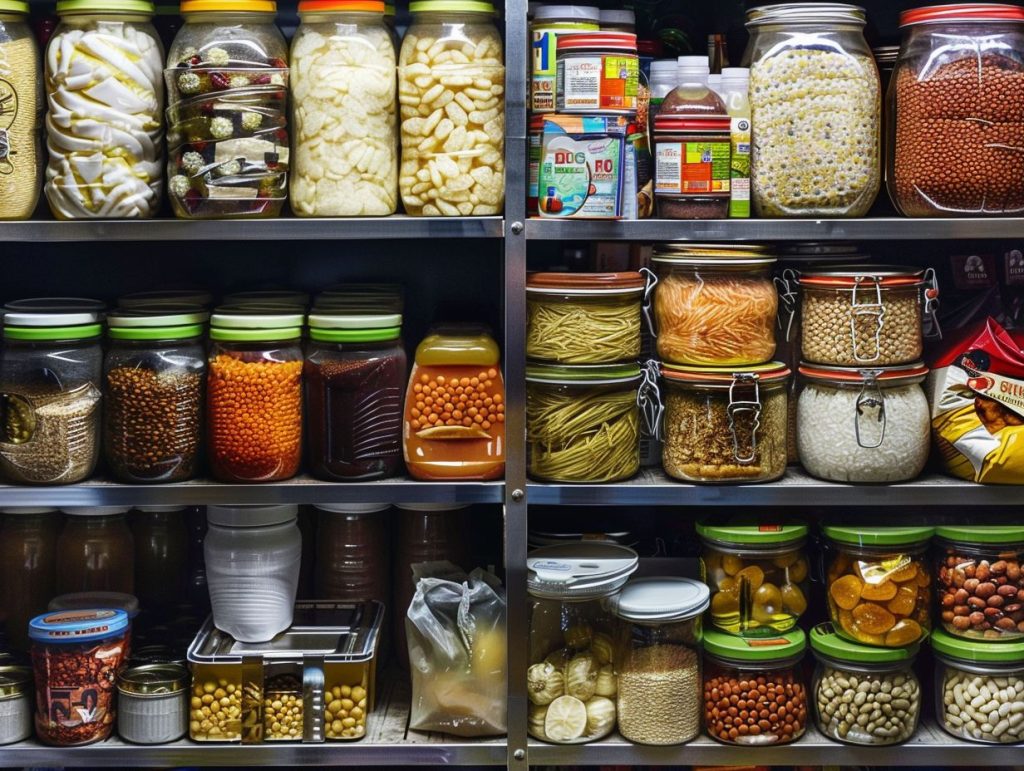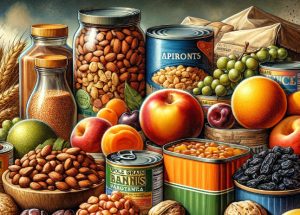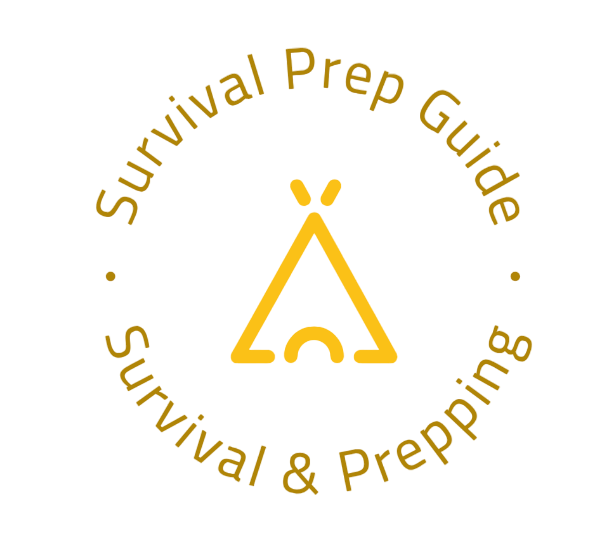Best Foods For Emergency Survival

In times of crisis or emergency situations, having the best survival food can make all the difference.
Being prepared with the best types of survival food is essential, whether facing natural disasters or outdoor adventures.
We will explore the factors to consider when choosing survival food, the best types of survival food to stock up on, the most nutritious options, and the best foods for different survival situations.
We will also discuss how to properly store and preserve survival food for long-term use.
Let’s ensure you are prepared for whatever may come your way.
Key Takeaways:
- Survival food is essential for any emergency situation, natural disasters, outdoor adventures, and long-term survival.
- When choosing survival food, consider factors like non-perishability, high-calorie content, long shelf life, and ease of preparation.
- Canned meats, dried fruits and nuts, whole grains, and protein bars and shakes are some of the most nutritious types of survival food.
What Is Survival Food?

Survival food refers to specially designed food items or supplies that are intended for consumption during emergency situations or conditions where regular food sources are unavailable.
During times of natural disasters, such as hurricanes, earthquakes, or power outages, access to fresh food may be limited or completely cut off. In such scenarios, having emergency survival food can be a lifesaver. These survival food items come in various forms, including freeze-dried meals, energy bars, canned goods, and nutrient-dense snacks.
They are carefully crafted to provide essential nutrients and calories needed to sustain individuals during prolonged periods of uncertainty or crisis. Incorporating a well-stocked supply of emergency survival food into your food storage plan is a proactive measure to ensure that you and your loved ones are prepared for any unforeseen circumstances.
Why Is Survival Food Important?
Survival food plays a critical role in ensuring individuals have access to essential nutrients and sustenance during emergencies or situations that limit regular food availability.
The long shelf life of survival food items allows for extended storage without compromising nutritional value.
The importance of storage considerations cannot be overstated when it comes to survival food. Proper storage techniques such as keeping items in a cool, dry place away from sunlight can help maintain the integrity of the food for a longer period. It’s crucial to rotate the stock of survival food regularly to ensure that the supplies remain fresh and ready to consume.
The nutritional benefits of survival food go beyond just providing sustenance; they offer a well-balanced source of essential nutrients such as protein, carbohydrates, fats, vitamins, and minerals. These nutrients are vital for maintaining energy levels, supporting immune function, and overall well-being during challenging situations.
What Are The Factors To Consider When Choosing Survival Food?
The best types of survival food include compact, nutrient-dense options that are easy to store and prepare. Choosing survival meals that cater to individual dietary needs and preferences can help in building a well-rounded survival food stash for emergency situations.
Regarding survival food, it is crucial to consider the nutritional value of each item. Opting for items rich in protein, fiber, and essential vitamins ensures that you are getting the necessary sustenance during challenging times.
Convenience in storage is another vital aspect to think about. Dehydrated fruits, freeze-dried vegetables, and vacuum-sealed pouches are efficient options that have a long shelf life.
Quick and easy meal preparation is essential in high-stress situations. Look for food items that require minimal cooking or can be consumed ready-to-eat.
Non-perishable Foods
Non-perishable foods, such as those provided by emergency survival food suppliers like SOS Food Labs, are essential components of any well-prepared survival food kit. These items have extended shelf lives and are ideal for long-term storage.
When facing uncertain situations like natural disasters or emergencies, having a stockpile of non-perishable foods can make the difference between being well-prepared and facing scarcity. Brands like SOS Food Labs are known for their high-quality, durable products that can sustain individuals and families during tough times. These foods require minimal to no refrigeration and can be
easily stored in airtight containers or emergency food supply kits, ensuring they remain intact for extended periods.

High-calorie foods, such as Augason Farms and Dehydrated Potato Slices, are valuable for sustaining energy levels in survival situations. These items are excellent for survival food storage as they provide a concentrated source of calories for prolonged sustenance.
During emergencies or when facing unpredictable circumstances, having access to nutrient-dense foods can make a significant difference. The convenience of Augason Farms Dehydrated Potato Slices lies not only in their long shelf life but also in the ease of preparation, requiring minimal resources. When consumed, these calorie-rich foods can fuel the body in demanding situations, offering a boost of energy when needed the most.
In survival scenarios, where resources are limited, the compact nature of such high-calorie products becomes a practical choice for ensuring adequate nutrition without the need for extensive cooking equipment. These dehydrated potato slices exemplify the efficiency of food storage solutions tailored for sustaining individuals through challenging conditions.
During emergencies or when facing unpredictable circumstances, having access to nutrient-dense foods can make a significant difference. The convenience of Augason Farms Dehydrated Potato Slices lies not only in their long shelf life but also in the ease of preparation, requiring minimal resources. When consumed, these calorie-rich foods can fuel the body in demanding situations, offering a boost of energy when needed the most.
In survival scenarios, where resources are limited, the compact nature of such high-calorie products becomes a practical choice for ensuring adequate nutrition without the need for extensive cooking equipment. These dehydrated potato slices exemplify the efficiency of food storage solutions tailored for sustaining individuals through challenging conditions.
Foods With Long Shelf Life
Easy-to-prepare foods like Nutrient Survival Southwestern Medley Singles are essential for maintaining a balanced survival diet. These convenient options provide essential nutrients and are ideal for quick consumption during emergency situations.
In times of crisis or emergencies, having access to readily available nutrition is crucial. Nutrient Survival Southwestern Medley Singles offer a combination of protein, fiber, and essential vitamins and minerals that are vital for sustaining energy levels and overall health.
Being compact and lightweight, these individual serving pouches are easy to store and carry, making them a convenient choice for camping, hiking, or emergency preparedness kits. The long shelf life of these products ensures that you have a reliable source of nutrition wherever you go.
What Are The Most Nutritious Survival Foods?
The most nutritious survival foods encompass a range of options, including canned goods, protein bars, dried fruits, nuts, whole grains, and other nutrient-rich selections. These items offer a high nutritional value and are crucial for sustaining individuals in survival situations.
Canned goods are particularly advantageous due to their long shelf life and retention of essential nutrients. Protein bars, on the other hand, provide a quick and convenient source of high-quality protein for sustained energy. Pairing these with whole grains enhances the intake of complex carbohydrates, supporting long-term energy levels. Incorporating dried fruits and nuts ensures a variety of vitamins, minerals, and healthy fats in the diet.
Canned Meats
Canned meats are valuable protein sources that provide essential sustenance in survival situations. These items offer convenience, extended shelf life, and high protein content, making them ideal for emergency food supplies.
During emergencies or natural disasters, having access to reliable protein sources is crucial for maintaining energy levels and sustaining overall health. Canned meats serve as a dependable solution due to their long shelf life, often lasting for several years, without the need for refrigeration. Protein is essential for muscle repair, cell growth, and immune function, making these canned goods a vital component of any emergency food stockpile.
Dried Fruits And Nuts
Dried fruits and nuts serve as excellent plant-based protein sources for individuals in emergency situations. These nutritious snacks offer a blend of essential nutrients, energy, and satiety, making them valuable additions to survival food kits.
One of the main benefits of including dried fruits and nuts in emergency supplies is their long shelf life, which ensures they remain consumable for extended periods without refrigeration. Their compact size and lightweight nature make them convenient for carrying in emergency bags or storing in limited spaces.
Dried fruits such as apricots, raisins, and figs provide natural sugars for a quick energy boost, while nuts like almonds, walnuts, and peanuts deliver a substantial amount of plant-based protein. This nutrient-dense combination can help sustain energy levels and promote feelings of fullness, aiding in overall well-being during challenging situations.
Whole Grains
Whole grains are essential components of a well-rounded survival diet due to their rich nutrient content, long shelf life, and versatility in meal preparation. These grains provide essential nutrients and sustained energy for individuals in challenging circumstances.
They contain a plethora of essential nutrients such as fiber, protein, vitamins, and minerals that support overall health and well-being. Due to their extended shelf stability, whole grains are a reliable source of sustenance during emergencies or survival scenarios. Whether used in breakfast porridge, hearty soups, or as a base for salads, whole grains offer incredible culinary versatility. They can be easily incorporated into various dishes, providing not only nourishment but also a satisfying texture and flavor profile.
Protein Bars And Shakes
Protein bars and shakes are convenient and portable options for individuals in survival situations, offering a quick source of protein and energy. These items are ideal for building a compact and nutrient-rich survival food stash.
When faced with emergencies or natural disasters, having access to easily consumable and nutritionally dense food can make a significant difference in one’s ability to stay nourished and energized. Protein bars and shakes fit perfectly into this scenario, as they require no preparation, have a long shelf life, and are packed with essential nutrients to support the body during challenging times.
What Is The Best Food for Long Term Survival
Meat is the healthiest option as it contains bioavailable and true nutrients that are not present in grains and plants. Canned tuna, chicken, sardines, oysters and salmon are all good sources of meat-based protein.
Choosing the best foods for different survival situations is crucial for ensuring adequate nutrition and sustenance. Whether facing natural disasters, engaging in outdoor adventures, or preparing for long-term survival scenarios, selecting appropriate food items is essential.
During natural disasters such as hurricanes or earthquakes, access to fresh food may be limited, making nonperishable items like canned goods, dried fruits, and nuts invaluable for sustenance.
- For outdoor adventures like camping or hiking, lightweight yet high-energy foods such as energy bars, jerky, and trail mix are convenient options that provide essential calories without weighing you down.
Long-term survival planning involves carefully considering food storage methods like freeze-drying or vacuum sealing to prolong shelf life and maximize resources. Creating a diverse meal plan incorporating essential nutrients like proteins, fats, and carbohydrates is key to maintaining health and energy levels in challenging situations.
Natural Disasters
In the face of natural disasters, having adequate emergency food supplies and effective storage solutions is paramount. Properly storing survival food items ensures readiness and accessibility during challenging circumstances.
Emergency food storage not only guarantees sustenance but also provides a sense of security amidst chaos. Utilizing space-efficient storage solutions, like compact shelving units or stackable containers, can significantly optimize available space and help manage supplies effectively. It’s essential to rotate food stock regularly, ensuring freshness and maintaining a reliable inventory of non-perishable items for any unexpected situation.
Outdoor Adventures
When embarking on outdoor adventures, the shelf life of food items and the efficiency of food storage methods become critical considerations. Planning for emergency food supply and storage ensures individuals are well-equipped for unexpected challenges.
Having a clear understanding of food shelf life is essential to prevent spoilage and ensure that the food remains safe for consumption during the journey.
It is advisable to opt for lightweight, high-calorie foods with extended shelf lives such as dehydrated meals, dried fruits, nuts, and energy bars.
Utilizing effective storage solutions like insulated coolers, airtight containers, and vacuum-sealed bags can help preserve the freshness and taste of the food for longer periods.
Long-term Survival
In scenarios requiring long-term survival preparedness, prioritizing essential nutrients, long shelf life, and a balanced survival diet is crucial. Maintaining nutritional adequacy over extended periods enhances resilience and sustenance in challenging situations.
Essential nutrients play a vital role in supporting various bodily functions and maintaining overall health.
Proteins, vitamins, minerals, and fiber are essential components that should be included in a well-rounded survival diet to ensure the body’s optimal functioning. Long shelf life provisions help in stocking up on non-perishable food items that can last for extended periods without spoiling, ensuring a stable food supply during emergencies.
How To Store And Preserve Survival Food?
Effectively storing and preserving survival food items is essential for ensuring their quality and longevity. Utilizing appropriate storage containers, implementing a rotation system, and employing preservation techniques are key strategies for maintaining the integrity of emergency food supplies.
Regarding storage containers, opt for airtight and waterproof options to prevent moisture and pests from damaging the food. Mason jars, Mylar bags, and food-grade buckets are commonly used choices for long-term storage.
Establishing a rotation system is crucial to make sure that older food items are consumed first, while newer stock is continuously added to the inventory. First in, first out (FIFO) and last in, first out (LIFO) are popular rotation methods to avoid food wastage.
For food preservation, consider techniques such as canning, freeze-drying, and vacuum sealing. These methods help in extending the shelf life of various food items without compromising their taste and nutritional value.
Proper Storage Containers
Selecting suitable storage containers for survival food storage is crucial to maintain product quality and extend shelf life. Proper containers help organize a survival food stash effectively, ensuring accessibility and readiness during emergencies.
Regarding storing survival food supplies, the right containers can make all the difference. Airtight containers are essential for preventing moisture and oxygen from spoiling the food, while durable materials like food-grade plastic or stainless steel help maintain freshness and protect against pests. By using transparent containers, you can easily see what items you have in your food storage, making it convenient to rotate stock to avoid expiration. Organizing your food stash with labeled containers also saves time and ensures that you can locate specific items quickly during critical situations.
Rotation System
Implementing a rotation system for survival food supplies helps manage storage space efficiently while ensuring items with long shelf lives are consumed timely. This practice maintains nutritional value and prevents wastage of essential emergency food provisions.
By organizing your food supplies in a rotation system, you create a streamlined process where older items are used first, reducing the chance of expiration and spoilage. This approach not only frees up storage space but also contributes to cost-efficiency by minimizing the need to replace expired provisions.
Considering shelf life is crucial in emergency preparedness, especially for non-perishable goods like canned foods, dried fruits, or freeze-dried meals. Incorporating a rotation system ensures that these items are regularly checked, consumed, and replenished, thus maintaining their quality and safety for a prolonged period.
Focusing on nutritional value retention is essential for sustaining health during emergencies. By consuming older stock first through rotation, you guarantee that your diet remains balanced and provides the necessary nutrients, vitamins, and minerals required for optimal well-being when access to fresh food is limited.
Preservation Techniques
Utilizing preservation techniques such as canning or dehydration helps retain the nutritional value of survival food items, particularly canned goods. These methods ensure essential vitamins and minerals are preserved, enhancing the longevity and quality of emergency food supplies.
When facing challenging circumstances, having access to nutrient-rich survival food is crucial for sustaining health and energy levels. The preservation process not only extends the shelf life of canned goods but also locks in vital nutrients like Vitamin C, B vitamins, and minerals essential for proper bodily functions.
Dehydration, another effective method, removes moisture from food items, preventing spoilage while preserving their nutritional content. By dehydrating fruits and vegetables, you can keep a good supply of antioxidants and fiber intact.
